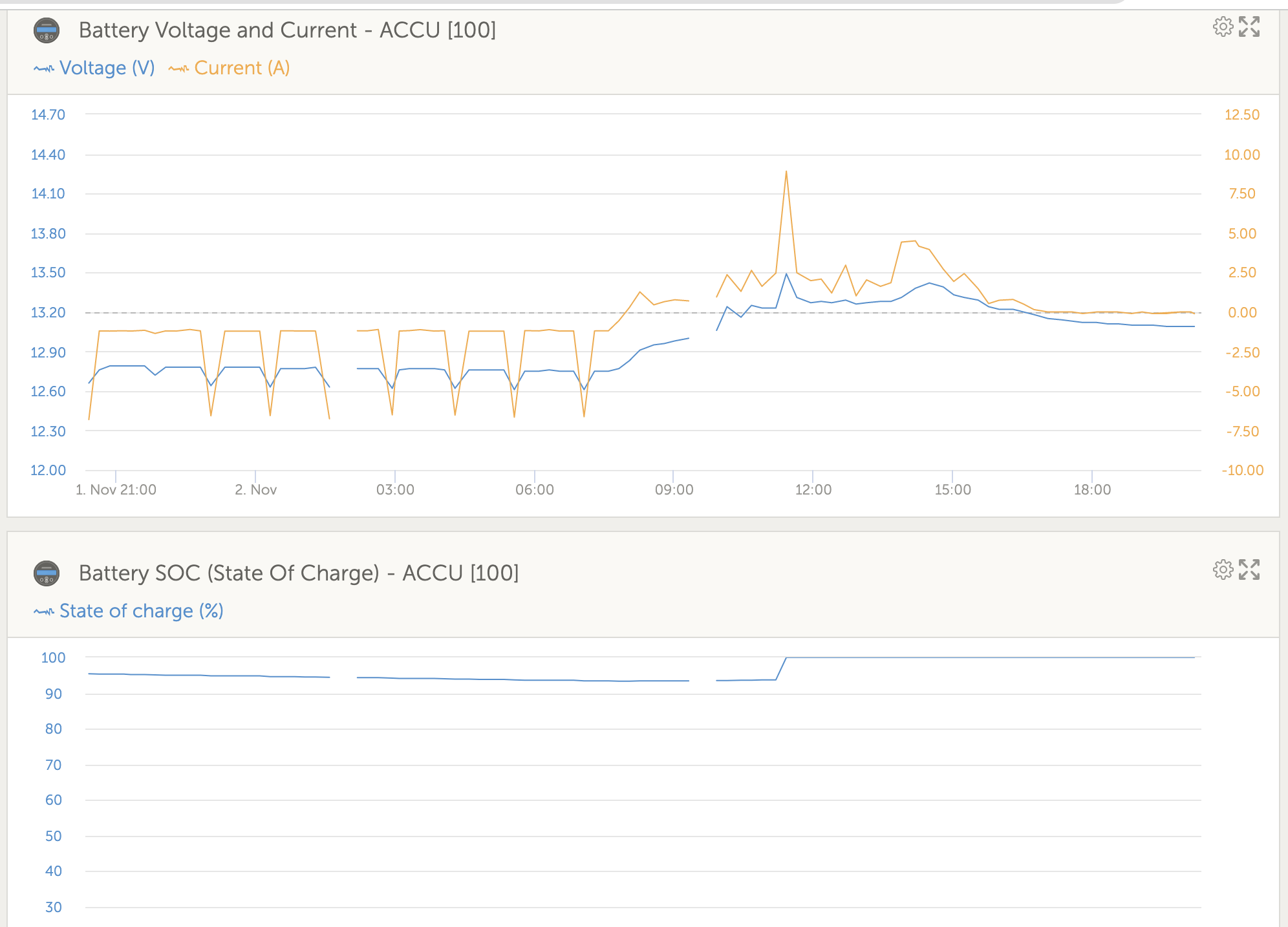A couple of days ago I started draining my batterybank, slowly, in order to do some tests with my newly acquired Globallink 520 (which I am very much in love with). I drained the battery to about 95%, leaving a fridge running overnight. Then all of a sudden (apparently out of nowhere) there was a Voltage/Amperage "surge" (see 11.30u.) and on this very same moment the SOC jumped from 95% to 100% on the BMV.
I think the GL520 graphs show this nicely.
The MPPT however was not to be fooled by this and has been dutifully "bulking away" after the anomaly untill in fact fully charged, 24hrs or so later.
My question: does anybody recognise this behaviour?
Any clues to what may have caused it?
Any insight or thoughts on this are very much appreciated,
Jan
